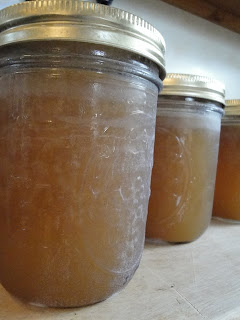Last year I tried growing some bare root artichoke plants that I got from the Natural Gardener. Although the plants sprouted, they never got very big and died as soon as the heat hit in May. This year I tried again, but planted transplants instead of bare root subjects. Now, perhaps I also paid more attention to them, watering and fertilizing more regularly, or perhaps it was just the breed of plant, but this spring, my two artichoke plants really took off.

(ps that's a baby dill plant in the far, upper left. More on that guy later)
Though I got the transplants at the same time from the same nursery, the one on the left decided to grow tall and the one of the right decided to grow short. The above picture shows them young and happy. I found out later that artichoke plants can get pretty ratty as they grow, and require pruning to remove dead/dying leaves that the roly-polys love to chomp on.
And you know what other bugs love artichoke plants? Aphids!

I sprayed some neem oil on the plants, but by the time I saw these buggers, I thought for sure the infestation would win. But then I saw a new form of foe.

Ugh! I felt like the worse gardener ever! I was totally powerless to help my plant. But then, I put aside my panic and did a little research. Turns out, these guys are 2 different forms of developing ladybugs.
(Sorry. That's the best shot I have of one.) So the ladybugs had come to munch all the aphids. Yay! The system works! Really. After less then a week I never saw any more aphids on the plants. I was amazed b/c watching the ladybugs, I never actually saw them eat anything. In fact aphids would just walk right up to a ladybug and then walk away unscathed. Well, at least as far as I could see. Apparently, they were way scathed when I wasn't looking.
And then came the first hints of artichoke.
I was totally stoked. And come to find that a plant can produce more than one artichoke at a time.
In my case, the secondary artichokes were never as big as the first one. Plus, the first one wasn't that big, but it was tasty.
Dan and I had to do some research about how to prepare and eat them (read: Alton Brown cookbook from Christmas) but it was a fun experiment.
Because of the smallish size of the artichokes we were picking, we thought we'd wait longer to see if they would get bigger. In this case, the just started to flower. But that's okay too. As artichoke eating by nature involves a lot of butter eating and it was probably time for us to cut back on that for the spring. Here's a photo sequence of the flowering:
Overall we got three purple flowers, but the heat is really taking a toll on the plants. Most of the leaves are yellow and shriveled and the flowers look like someone singed them with a lighter. I don't know if the plants will survive until next year (it's not likely in texas) but if not, I'll be looking for transplants to grow in 2011. And this time I think I'll give them more room to grow. They start small but become very big additions to the garden.






























